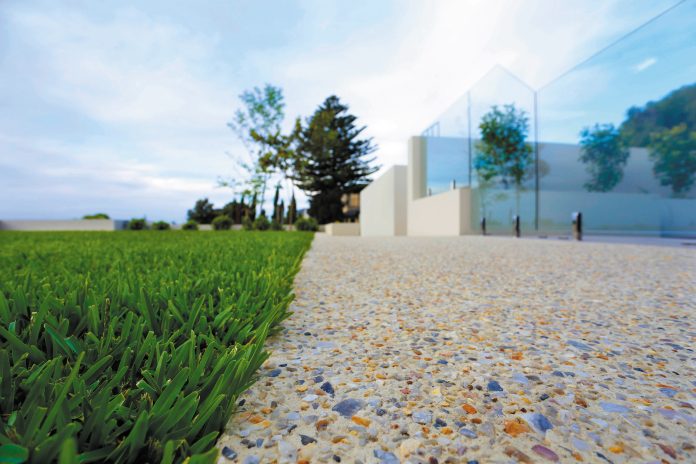Are you ready to delve into the fascinating world of tinted cement blueprints?
In this article, we will take you on a journey through the history, techniques, and colors of these unique architectural renderings.
Discover the tools and methods used to create stunning tinted cement blueprints, and explore the vibrant pigments that bring them to life.
Prepare to be amazed as we showcase breathtaking examples of blueprint artistry and discuss the future innovations and trends in this captivating field.
Let’s begin our exploration now.
Key Takeaways
– Tinted cement blueprints have a long history and have evolved over time, reflecting the artistic and cultural values of different periods.
– Various techniques and tools, such as trowels, stencils, and brushes, are used to create tinted cement blueprints, with different application methods producing unique patterns and textures.
– Colors in tinted cement blueprints are achieved through the blending of different pigments, allowing for a wide range of shades and tones.
– Tinted cement blueprints are used in architectural designs and contemporary art installations, adding color, texture, depth, and character to the artwork.
The History of Tinted Cement Blueprints
As you explore the history of tinted cement blueprints, you’ll discover the fascinating origins and evolution of this unique architectural technique.
The evolution of tinted cement blueprints can be traced back to ancient civilizations, where the use of pigments in construction materials was already prevalent. However, it wasn’t until the early 20th century that tinted cement blueprints gained popularity and became a significant part of architectural design.
The cultural significance of tinted cement blueprints lies in its ability to add color and vibrancy to buildings, reflecting the artistic and cultural values of a particular time and place.
Over the years, advancements in technology and the development of new pigments have allowed architects to create increasingly intricate and visually striking designs using tinted cement blueprints.
Today, this technique continues to be used in various architectural projects, leaving a lasting impact on the built environment.
Techniques and Tools for Creating Tinted Cement Blueprints
To create tinted cement blueprints, you’ll need a few essential tools and a basic understanding of specific techniques.
These tools include a trowel for applying the cement mixture, a stencil for creating unique designs, and a brush for adding fine details.
When it comes to techniques, there are various methods you can explore to achieve different effects. One technique is to use a sponge to dab the tinted cement onto the surface, creating a textured look.
Another method is to spray the tinted cement using a paint sprayer, which allows for a more even application.
Additionally, you can experiment with different application methods such as stippling or sponging to create different patterns and textures on your tinted cement blueprints.
Exploring the Different Colors and Pigments in Tinted Cement Blueprints
With a variety of colors and pigments available, you can experiment and create unique designs in your tinted cement blueprints. Different shades of color can be achieved by blending various pigments together.
For example, mixing blue and yellow pigments can create a vibrant green shade, while combining red and white pigments can result in a soft pink hue. To achieve a more subtle and natural look, you can use earth tones such as browns and grays.
Color blending techniques such as layering, stippling, and marbling can also be used to create depth and texture in your designs.
By exploring the different colors and pigments, you can truly showcase your artistic vision in your tinted cement blueprints.
Now, let’s move on to showcasing stunning examples of tinted cement blueprint artistry.
Showcasing Stunning Examples of Tinted Cement Blueprint Artistry
You can now feast your eyes on the stunning examples of tinted cement blueprint artistry that will leave you in awe.
The unique applications of tinted cement blueprints in architectural design showcase the versatility and creativity of this technique. Architects have been incorporating tinted cement blueprints into their designs to add a touch of color and texture to their structures. From vibrant facades to intricate patterns embedded within walls, tinted cement blueprints bring a new dimension to architectural aesthetics.
Furthermore, the role of tinted cement blueprints in contemporary art installations can’t be overlooked. Artists are utilizing this technique to create visually striking and thought-provoking pieces. Whether it’s a large-scale sculpture or an immersive installation, tinted cement blueprints add depth and character to the artwork, making it truly extraordinary.
The Future of Tinted Cement Blueprints: Innovations and Trends
Embrace the exciting future of tinted cement blueprints as they pave the way for innovative designs and emerging trends in architecture and art.
The future of tinted cement blueprints holds great promise in terms of innovative applications and the use of sustainable materials. Architects and artists are increasingly exploring the possibilities of tinted cement blueprints to create unique and visually striking structures.
By incorporating different pigments and additives into the cement mixture, a wide range of colors and textures can be achieved, allowing for endless creative possibilities.
Furthermore, the use of sustainable materials, such as recycled aggregates and eco-friendly additives, is becoming more prevalent in the production of tinted cement blueprints. This not only reduces the environmental impact but also promotes the use of renewable resources, making tinted cement blueprints a sustainable choice for future architectural and artistic endeavors.
Conclusion
In conclusion, the world of tinted cement blueprints offers a rich history, diverse techniques, and a wide range of colors and pigments.
Through the use of specialized tools and skilled craftsmanship, artists can create stunning works of art that showcase the beauty and versatility of tinted cement.
As new innovations and trends emerge, the future of tinted cement blueprints holds exciting possibilities for further exploration and experimentation in this unique artistic medium.








